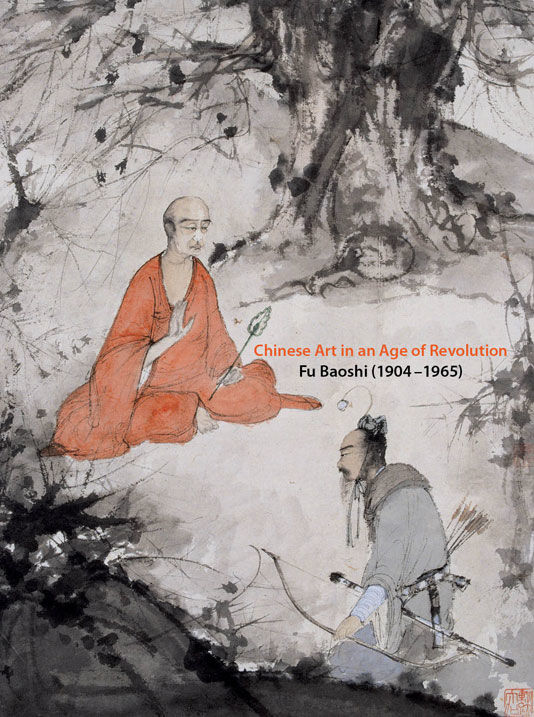Fu Baoshi was born in 1904 in China. He is known for his ink brush paintings. He was a painter, an art historian, and a seal carver. Fu was mostly self taught. In 1933 he attended Tokyo School of Fine Arts to study the History of Oriental Art. He returned to China in 1935 and taught in the Art Department at Central University, now Nanjing University. Fu masterfully combined foreign styles with strong nationalistic styles. His work was unique and bold. He used traditional brush work and added in strong colors. His landscape paintings show his skills with inking dots. He created several new techniques that melded well into the traditional styles. Fu believed that an artist needed to be emotionally and physically present in their art. To accomplish this Fu would often paint while inebriated. He created a spattered-ink method to create “action art”. This spontaneous style is similar to Abstract Expressionism.
Fu was very proud of his nation. On his travels he would paint landscapes that captured his attention. The MET is currently showing a an extensive display of the artist’s oeuvre. The collection starts with Fu’s earliest works that are modeled after traditional Chinese masters. Then the collection moves to works that interpret the poems of Qu Yuan. The poet became famous for killing himself to prove his loyalty. Another of Fu’s paintings, Drunken Monk, is a portrait of a Buddhist monk that worked while inebriated, like Fu. He uses these works to refect his own thoughts and feelings.
As you move further through the exhibition you come to a room full of landscapes. Fu’s use of color comes to full force in these. Powerfully red suns and soft pink skies showcase his masterful use of color. This exhibition is worth seeing. It holds the largest collection of Fu’s works outside of Asia.


















